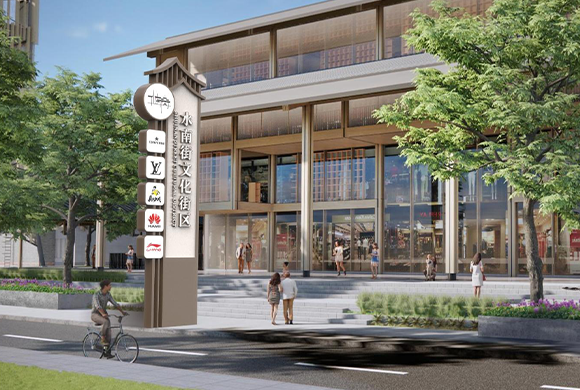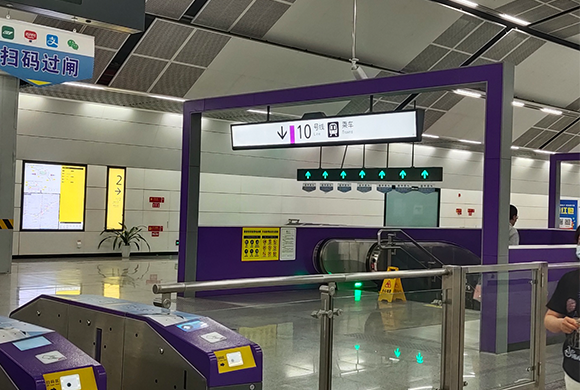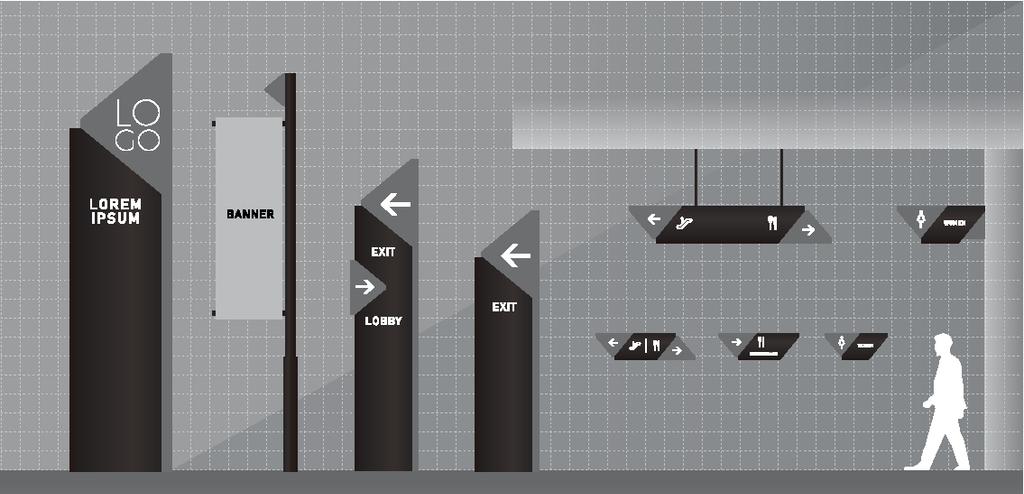The height of signage installation: precise design centered on user experience.
In today's complex built environments and public spaces, the importance of wayfindingsystemdesign is becoming more and more prominent. Among them, the installation height of signage is a key factor, which directly affects the user experience and information access effect.
From the perspective of user experience, to determine the installation height of the signage needs to consider a variety of factors. First of all, the principle of ergonomics should be fully considered. Generally speaking, the average sight height of an adult is between 1.5 m and 1.7 m. Therefore, the installation height of important signs, such as emergency exits and directional guidance, should be within this range so that users can easily see them in the process of traveling without the need to excessively raise their heads or look down.
Different types of venues have different requirements for signage installation heights. In commercial places such as shopping malls, wayfindingsignagedesign should be determined based on the direction of foot traffic and consumer behavior. For example, floor signage is usually installed at a higher position to ensure that it can be noticed by distant customers in a larger space; while store signage should be installed at the level or slightly higher than the line of sight of customers according to the location of the store and the surrounding environment to attract customers' attention.

For transportation hubs such as airports and railway stations, the installation height of signage requires higher uniformity and standardization. Boarding gate signs in waiting halls and guidance signs at exit gates should be installed at conspicuous and consistent heights so that travelers can quickly access key information and reduce the time spent searching and getting lost.

In addition, the needs of special populations need to be considered. For the convenience of children, wheelchair users and the visually impaired, some of the signs should be set in a lower position, or touchable and voice prompts and other ways to ensure that everyone can smoothly access the guidance information.

In the design of modern guide sign system, the application of technology also provides new ideas for determining the installation height. For example, through intelligent sensing technology, the signs can automatically adjust the brightness and display height according to the proximity of people, further enhancing the user experience.
In conclusion, the installation height of ZIGO signage is not set arbitrarily, but with user experience as the core, through in-depth study of ergonomics, the characteristics of different places and the needs of special people, combined with advanced technology, carefully wayfindingsignagedesign and wayfindingsystemdesign, to create a convenient and efficient space navigation environment for people. A convenient and efficient space navigation environment.